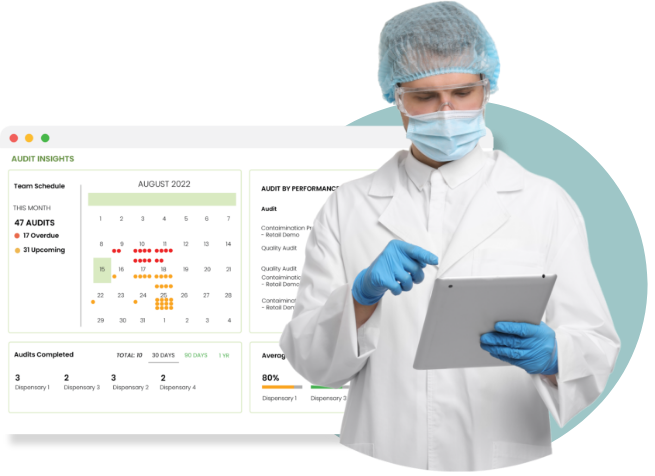Author: Ben Hartman | September 4, 2024 | 6 Min Read
Betsy Craig Describes Why For Allergen Prevention, "Everybody Must Buy In"

From restaurant menus to product labels to warning signs on the doors of daycares, our daily lives present frequent reminders of the dangers posed by food allergens.
According to figures published by the Centers for Disease Control in January 2023, 5.8% of children and 6.2% of adults have a food allergy. Four years earlier, a survey published in 2019 found that out of 40,433 U.S. adults, an estimated 10.8% had a food allergy - while nearly 19% believed that they had a food allergen of some sort. Of the respondents with food allergens, nearly half had at least one adult-onset food allergy, and 38% reported at least one food allergy-related emergency room visit in their lifetime.
And the consequences of these allergens can be devastating. According to figures from Johns Hopkins Medicine, food allergies cause 30,000 cases of anaphylaxis, 2,000 hospitalizations, and 150 deaths annually.
According to Betsy Craig, the CEO and Founder of MenuTrinfo and Co-Chair of the Food Allergen Committee for the Conference for Food Protection, taking the steps necessary to prevent contact with allergens is crucial for all food companies.
What are they looking for in an inspection?
In allergens prevention, the term “contact” is used instead of contamination. The FDA coined this term “because all an allergen has to do is touch another non-allergen-containing item and pollutes it and therefore causes a recall.” Craig said.
MenuTrinfo’s “AllerCheck" program helps companies create safer dining facilities, by way of ingredient reviews, and consulting on training, receiving, storage, and more. Those who complete the assessment receive an AllerCheck seal and certificate indicating that they follow proper processes and procedures to minimize the risk of cross-contact.
The company also offers the Certified Free Form (CFF) designation, “the only program in the country that checks from loading to dock to table-top for the presence of and potential for cross-contact with the Majority 9 allergens.”
“We’re looking at what their allergen control plan is making sure it's strong, robust and all-encompassing.”
And whenever an inspection is performed, labeling is absolutely key.
“Here’s the truth - most recalls are because the labels are wrong on allergens. They send products out with a label that is not accurate on either what allergens are in there or what allergens may be in there,” Craig said.
She added that “when people get sick from manufactured food products around allergens it's usually when an allergen was contained in the product and not properly identified on the label.”
To make matters more concerning, Craig said that when adults learn they have a new food allergy, 25% of the time the first allergy incident happens outside of the home.
Under the Food Allergen Labeling and Consumer Protection Act of 2004, there are eight major food groups that account for 90 percent of food allergies These include milk, eggs, fish, crustaceans, tree nuts, peanuts, wheat, and soybeans. In January 2023, sesame was added to the list.
Milk is the most common allergen for infants and young children while an allergy to crustaceans is the most common for adults.
Craig said dairy is the deadliest allergy to children and mentioned the case of 3-year-old Elijah Silvera of New York City. Silvera had a severe dairy allergy and died in November 2017 after he was given a grilled cheese sandwich at a daycare. The tragedy led New York state to adopt Elijah’s Law, which requires childcare facilities to follow state food allergy guidelines to prevent, recognize, and respond to life-threatening allergic reactions.
Craig said the case illustrates the need for proper allergen training and for second checks to be in place.
However, having additional personnel double-check food isn't the only key allergen prevention method. Craig said that CPG companies that want to prevent an allergen-related incident ”need to know what they can and can't bring into their facility. They need to know why cleanliness matters when it comes to food allergies. They need to know their allergy control plan and the GMPs.”
But besides safety, there is also just the necessity to prevent recalls. Food safety recalls can easily cost companies millions of dollars and cause serious damage to brand reputation. And allergies account for over half of all food safety recalls.
According to Craig, a “huge portion” of these allergen-related recalls are due to bad labeling.
How allergens make it into products
There are all types of contact points in which allergens can enter food products, but specific safety measures can dramatically help reduce the risk.
According to Craig, this means properly cleaning all production lines according to your allergen management plan, and making sure that shared lines in particular are kept clean.
“If you’re using the same line to make allergen-containing items and then move to non-allergen-containing items, how are you cleaning? How are you verifying it's clean?” Craig said.
She said that luckily, there is great awareness among food production companies regarding what they can and cannot bring into a production facility.
Craig said regular testing is critical and “nut free” and “certified free” are not the same.
If a company truly wants to protect customers from allergens, they must go through the testing process to ensure that products are certified free of allergens.
The Three Ps
Craig said that allergen incident prevention is carried out in three key steps: prep, process, and package.
She said this requires closely following your allergen control plan, preparing and training your staff in best practices for allergen control, and making sure to prepare all production lines and ingredients to operate safely. Finally, it must be packaged correctly.
“Make sure to package it up with the right identifying labels and the right ingredients mentioned so that it's safe all the way from your loading dock to somebody's table at home.”
It is also best to hire a consultant to assess your facilities and processes, Craig said.
And like much else in food safety, Craig said it requires total commitment from management.
“It requires everyone to buy in. Nobody can be reluctant or drag their feet on it,” Craig said.
On September 18th at 12pm CST, Rootwurks will host Betsy Craig for a special webinar “How to Prevent Allergens and Safeguard Your Company.” To grab your spot, register here. In addition, food industry professionals can learn how to master allergen control by taking the Rootwurks Allergen Management Training for Food Safety course, available now on the Wurkshop.
Contributors

Ben Hartman
From HACCP certification to the basics of hygiene, our on-demand courseware has you covered.


-3.jpg?width=1200&height=628&name=Linkedin%20(23)-3.jpg)



.jpg?width=120&height=80&name=Baby%20(1).jpg)

